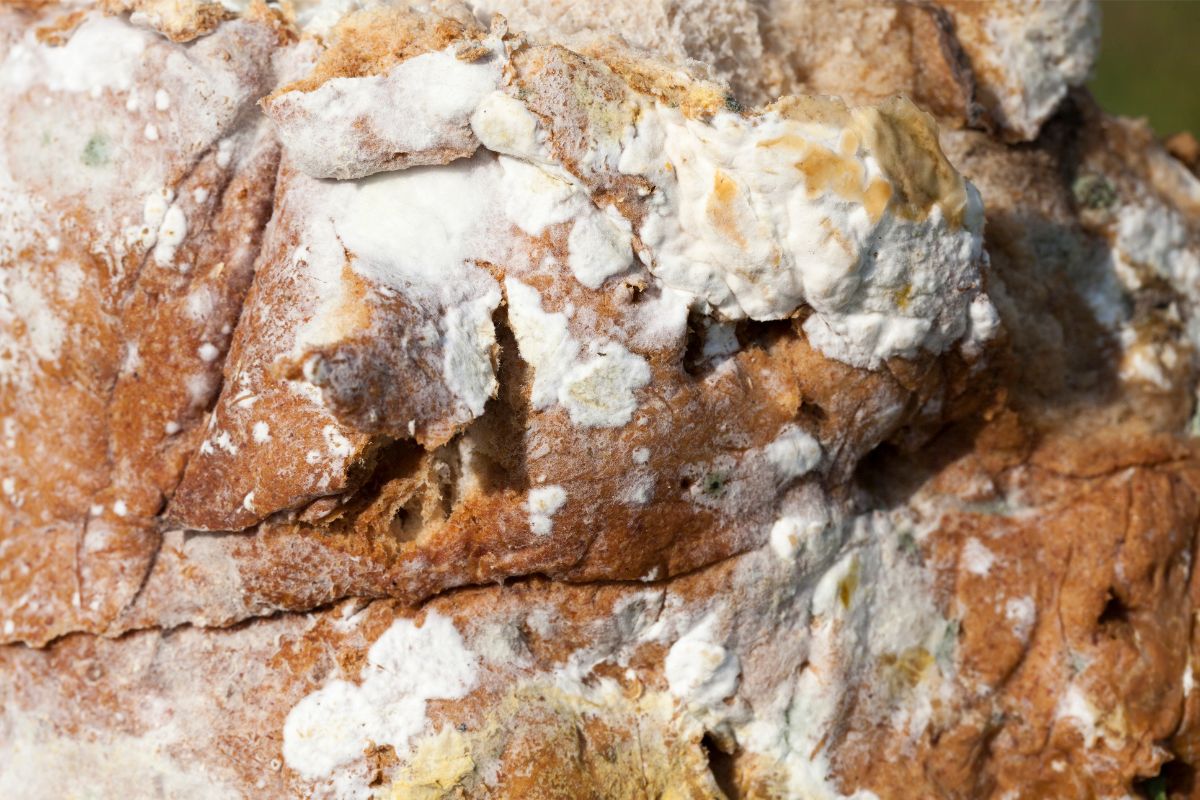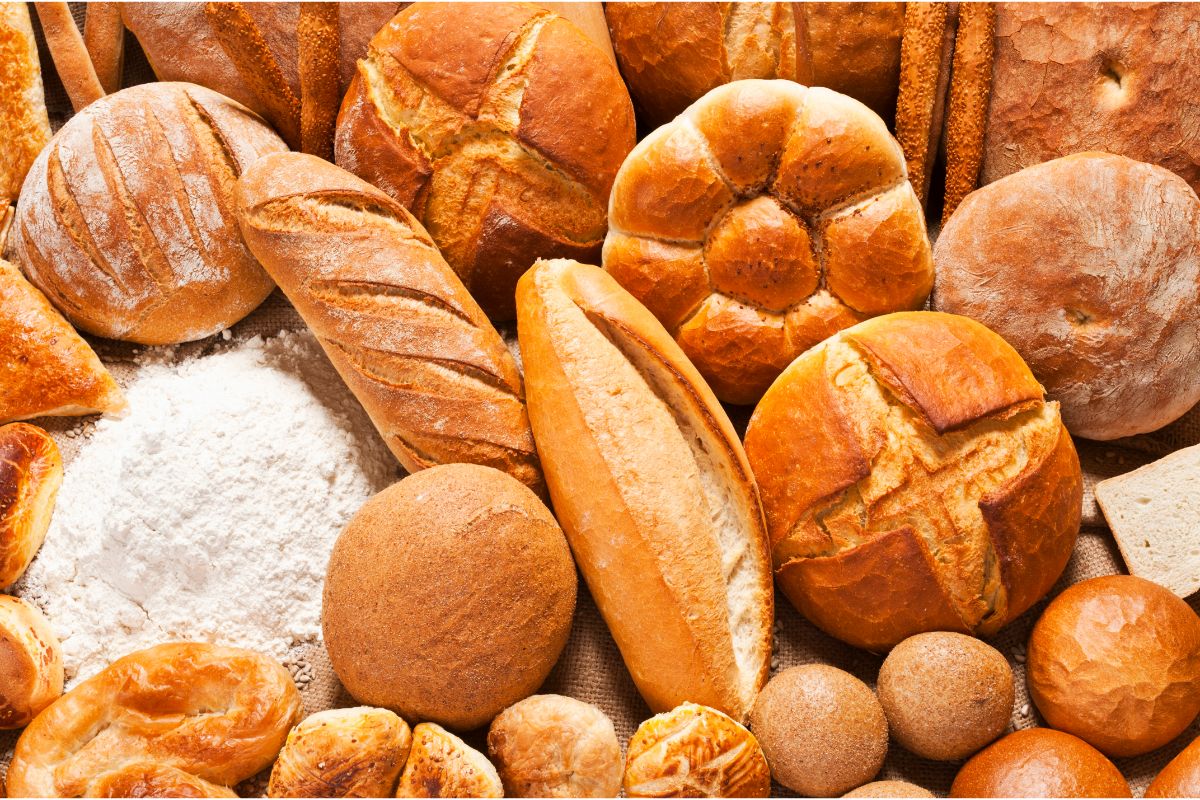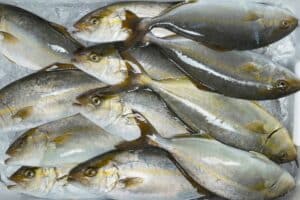Bread is a staple food for many of us, but sometimes we find ourselves faced with a dilemma – is that white substance on our bread mold or just flour?

It’s not always easy to tell, and the last thing you want is to accidentally consume mold and risk potential health issues.
Mold is a type of fungus that grows on organic matter, including bread, if it is left out for too long or stored in humid conditions.
Consuming mold can cause a range of symptoms, including allergic reactions, respiratory problems, and even toxic effects in some cases.
On the other hand, flour is a common ingredient in bread making, and it’s not uncommon to see white specks on the surface of fresh bread.
So how can you tell whether the white substance on your bread is mold or just flour? In this article, we’ll provide you with simple tips to help you identify the difference between the two.
By learning how to check for white mold or flour on bread, you can ensure that you and your family stay safe and healthy while enjoying this beloved staple food.
What Is White Mold?
White mold is a type of fungus that can grow on a variety of surfaces, including bread, fruits, vegetables, and other organic materials.
As its name suggests, white mold appears as a white, fuzzy or powdery growth on the surface of the affected material.
White mold is often caused by a type of fungus called Sclerotinia sclerotiorum, which can be found in soil and plant debris.
It thrives in moist, humid conditions and can quickly spread to other surfaces if not properly treated. If left unchecked, white mold can cause damage to the affected material, leading to spoilage or even the release of harmful toxins.
While some types of white mold are harmless, others can pose health risks if ingested or inhaled. Therefore, it’s important to identify and properly treat white mold to prevent potential health issues.
Why Does Mold Grow On Bread?
Mold grows on bread because it provides an ideal environment for mold to thrive. Bread is a moist and nutrient-rich food source that provides a perfect breeding ground for mold spores.
Mold spores are everywhere around us, including in the air we breathe, and they can easily land on bread.
Once a mold spore lands on a piece of bread, it begins to grow and reproduce rapidly, especially if the bread has been left out in a warm and humid environment.
Additionally, bread often contains preservatives to extend its shelf life, which can also contribute to mold growth.
While preservatives can help prevent spoilage and mold growth for a short time, they can eventually break down and allow mold to thrive.
Therefore, it’s important to properly store bread in a cool and dry area and consume it before it begins to spoil. If you do see mold growing on your bread, it’s best to discard it to avoid potential health risks.
How To Tell Whether Its White Mold Or Flour
It can be challenging to tell whether the white substance on your bread is mold or just flour, but there are a few simple ways to differentiate between the two.
Here are some tips on how to tell whether it’s white mold or flour:
Check the texture: Mold usually has a fuzzy or powdery texture, while flour is finer and smoother. If you gently touch the white substance and it feels soft and fuzzy, it’s likely to be mold.
On the other hand, if it feels dry and powdery, it’s more likely to be flour.
Smell it: Mold usually has a musty or unpleasant odor, while flour has a neutral smell. If you notice a strong or unpleasant odor coming from the white substance, it’s likely to be mold.
Look at the bread closely: Mold on bread often appears as green or black spots, while flour is usually evenly distributed across the surface. If you see spots or discoloration on the bread, it’s more likely to be mold.
Consider the age: If the bread appears fresh and recently baked, the white substance is more likely to be flour. However, if the bread has been sitting out for a while, especially in a humid environment, the white substance is more likely to be mold.
If you’re still unsure whether the white substance is mold or flour, it’s best to err on the side of caution and discard the bread to avoid potential health risks.
Risks Of Consuming Mold
Consuming mold can pose potential health risks, depending on the type of mold and the amount ingested. Here are some risks of consuming mold:
- Allergic reactions: Mold can cause allergic reactions in some people, especially those who are sensitive to mold or have allergies. Symptoms of mold allergies can include sneezing, runny nose, itchy eyes, and skin rashes.
- Respiratory problems: Inhaling mold spores can cause respiratory problems, especially in people with pre-existing conditions such as asthma or chronic obstructive pulmonary disease (COPD).
Symptoms of mold exposure can include coughing, wheezing, and difficulty breathing.
- Toxic effects: Some types of mold produce toxins, such as mycotoxins, that can be harmful if ingested in large amounts. Symptoms of mycotoxin exposure can include nausea, vomiting, diarrhea, and even neurological problems in severe cases.
- Infections: Certain types of mold can cause infections in people with weakened immune systems, such as those undergoing chemotherapy or with HIV/AIDS. Invasive mold infections can be life-threatening if not treated promptly.
Tips For Keeping Bread Fresh
Keeping bread fresh can be challenging, especially in humid environments, but there are several ways to help extend its shelf life. Here are some tips for keeping bread fresh:

- Store it properly: Store bread in a cool and dry place. Don’t store bread in the fridge, as the moisture can cause it to dry out and become stale more quickly.
If you live in a humid environment, consider storing bread in an airtight container to prevent moisture buildup.
- Freeze it: Bread can be frozen to extend its shelf life. Slice the bread and store it in an airtight freezer bag, then freeze for up to 3 months. To thaw, remove the desired number of slices from the freezer and let them come to room temperature.
- Use a bread clip or twist tie: To help prevent air and moisture from getting into the bread bag, use a bread clip or twist tie to seal it shut. This will help keep the bread fresh for longer.
- Don’t slice it until you’re ready to use it: Slicing bread exposes more of its surface area to air, which can cause it to dry out more quickly. To keep bread fresh for longer, wait to slice it until you’re ready to use it.
- Toast it: If your bread is starting to go stale, try toasting it. Toasting bread can help revive it by removing some of the moisture and giving it a crispy texture.
Final Thoughts
Determining whether the white substance on your bread is mold or flour can be challenging, but it’s important to differentiate between the two to avoid potential health risks.
While mold on bread can pose risks to your health if ingested, flour is generally safe to consume.
It’s always better to err on the side of caution and discard bread if you’re unsure whether the white substance is mold or flour.






